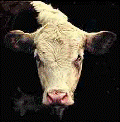Animal Science, Department of

Department of Animal Science: Dissertations, Theses, and Student Research
First Advisor
Andrea Watson
Second Advisor
Galen Erickson
Third Advisor
Jim MacDonald
Date of this Version
Summer 8-2017
Document Type
Thesis
Abstract
Three experiments evaluated the effect of implant strategies on feedlot performance and carcass characteristics of crossbred steers and Holstein steers. Final BW, ADG, and G:F were not different between implant strategies in Exp. 1 and 2. The utilization of more aggressive implant strategies has minimal impact on both feedlot and carcass performance of cross breed steers.
Four experiments evaluated the effects of supplemental RUP in corn silage growing diets and RUP content and RUP digestibility of corn silage. Exp. 1, supplemented five concentrations of RUP to growing calves consuming a corn silage diet. As supplemental RUP increased ADG and ending BW increased. In Exp. 2, in vitro methods were used to determine RUP of 37 and 43% DM corn silage by correcting for microbial contamination using purines. As a % of CP, RUP averaged 22.7 and 23.9 for the 37 and 42% corn silages. In Exp. 3, in situ methods were used to determine RUP content and RUP digestibility of 37 and 42% DM corn silage. RUP digestibility without rinsing in neutral detergent fiber solution averaged 37.5 and RUP digestibility of corn silage rinsed in neutral detergent fiber solution averaged 32.3. In Exp. 4, DRC was reconstituted to determine protein values of grain in corn silage. As DM of corn decreased % RUP decreased and % DMD increased. Corn silage has low RUP and increased moisture further decreases RUP of corn silage.
Two experiments evaluated the effects of inoculants on nutrient losses and aerobic stability of corn silage and HMC. In Exp. 1, corn silage was inoculated at either 0, 200,000, or 400,000 CFU/g and HMC was inoculated at either 0, 300,000 or 600,000 CFU/g then ensiled for 30 or 90 days. In Exp. 2, HMC was inoculated at either 0 or 600,000 CFU/g and ensiled for either 90 or 120 days. In both experiments pH increased linearly for both corn silage and HMC as level of inoculant increased. As inoculant level increased, the amount of lactic acid decreased and the amount of acetic acid increased.
Advisor: Andrea K. Watson


Comments
A THESIS Presented to the Faculty of The Graduate College at the University of Nebraska In partial Fulfillment of Requirements For the Degree of Master of Science, Major: Animal Science, Under the Supervision of Professor Andrea K. Watson. Lincoln, Nebraska: August 2017
Copyright (c) 2017 Colton Ray Oney